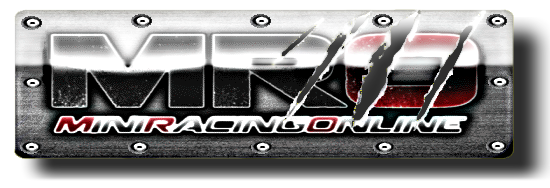Any professional driver will say the same thing, smoothness is a crucial aspect in racing for multiple reasons such as tire physics, traction management, and weight transfer. As a car is in motion, all these aspects affect how the car navigates around the course. Try to observe other faster drivers as often as possible and it will give you a rough idea of where the car should be at any given time but it's up to you to put the car exactly where you want it to be.
Traction Management - Knowing your car's limits and your tire's limits in addition to how they work is a crucial aspect in professional racing. Test the limits but never exceed the limits of the car and the tires as much as you possibly can until you know exactly what the car will do based on your steering, throttle, and brake input during all 4 driving conditions which are:
1) Accelerating
2) Threshold Braking
3) Balanced Throttle
4) Cornering
note: The colored circles around the tires in the diagrams below represent traction levels as indicated.
Yellow = Reduced Traction
Green = Moderate Traction
Red = Increased Traction
Acceleration - Under acceleration, only give enough input on the gas pedal to go as fast as possible without breaking road adhesion. Once the tires break traction even a little, you'll have to lift off and wait till the tires regain adhesion which will add time to your laps. It's also risky because it can unbalance the car and induce a spin due to the loss of traction in the rear.
Accelerating - Straight

Accelerating - Turning

Threshold Braking - Under braking, try to brake in a straight line as that will maximize traction on both front tires evenly while only giving just enough input on the brakes so that the tires are almost locking up but still rolling. This is known as "threshold braking" because you're braking on the threshold of the tire's capability. DON'T lock up the tires by applying too much brake pressure as it "flat-spots" the tires and can take a lot more distance to slow down plus it will prevent the car from turning while it slides.
Braking - Straight

Braking - Turning

Balanced Throttle - Balancing the throttle means maintaining a constant speed without accelerating or braking. It places the car in a "static speed / static traction" state. There are normally 3 times when a car is at static speed with static traction. It's when the car is at a dead stop, when the throttle is balanced and remains constant, or when it has reached it's absolute top speed. All 4 tires have an equal amount of traction as the weight is not shifting in any direction and is basically static which offers maximum tire adhesion to the track.
Balanced Throttle - Straight

Balanced Throttle - Turning

Cornering With Front Wheel Drive Cars - If you're in a front wheel drive car, you'll have to trailbrake slightly meaning you'll have to brake a little bit longer and for a split second while entering the turn as front wheel drive cars suffer from terminal understeer. As you brake for a split second longer while entering the turn, you're forcing the weight of the car on the front tires which adds more grip so the car can turn easier, it also unloads the weight of the car off of the rear tires which further helps the car turn by reducing grip which helps the car rotate. A common mistake most drivers make is using excessive steering input or over-turning the steering wheel. By turning the wheel too much, it generates heat and friction on the front tires while also binding the chassis.
Understeer - Binding The Chassis

Braking - Turning

Cornering With Rear Wheel Drive Cars - Rear wheel drive cars turn by a whole other method that doesn't involve trail braking as most rear wheel drive cars have to brake in a straight line then balance the throttle through the corner which will keep the outer tires in a static state that will maximize traction on those 2 wheels so the car can maintain a higher speed through the corner. Accelerating while turning will shift weight to the rear which reduces traction on the front tires making the car understeer. Braking while turning will unbalance the weight towards the front tires which will make the car oversteer as the added grip in front + reduced grip in the rear + weight transfer combined will induce the car into a spin in most cases. This is why you never brake if you're in a spin as it will only make the car spin even more.
Normal Steering - No Oversteer Or Understeer

Balanced Throttle - Turning

Advanced Cornering Techniques - A more advanced cornering method requires the car to enter the turn at just the right speed while balancing the throttle so the car is on the verge of drifting yet maintaining adhesion. As the car is on the verge of drifting, you don't need steering input as you're controlling the car's angle by throttle only. This technique involves knowledge on slip angles and how much adhesion you can afford to play with without spinning out of control. If done properly, the steering input is basically zero, the throttle input is increased, and the car not only rolls better and faster through the corner, you're already on the gas and can hammer it at the exit. It's a technique that all formula car drivers have to master if they want to compete and can take years to learn.
Oversteer - Rear Is Drifting

Accelerating - Turning

Hopefully this information I've written and shared in many places will help anyone that wants to learn more about racing without paying the thousands in racing schools that I had to pay for to learn lol. - F2













